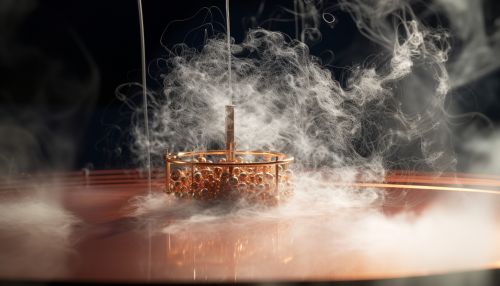Meson
Introduction
A meson is a type of subatomic particle that is composed of a quark and an antiquark. Mesons are classified as hadrons, which are particles that interact through the strong force. The existence of mesons was first proposed by Japanese physicist Hideki Yukawa in 1935, and the first meson, the pion, was discovered in cosmic rays in 1947.


Properties
Mesons are characterized by their spin, parity, and charge. They have integer spins, which classifies them as bosons, and they can have either positive, negative, or neutral charge. The mass of a meson is typically greater than that of an electron but less than that of a proton.
Types of Mesons
There are several different types of mesons, including the pion, the kaon, the eta, and the D meson. Each of these mesons is composed of a different combination of quarks and antiquarks, which gives them their unique properties.
Pions
Pions are the lightest mesons and are often involved in the decay of other particles. They come in three forms: the positively charged pion, the negatively charged pion, and the neutral pion.
Kaons
Kaons are heavier than pions and can also come in positive, negative, and neutral forms. They are composed of a strange quark and an up or down antiquark.
Eta Mesons
Eta mesons are neutral and are composed of a mixture of up, down, and strange quarks and antiquarks.
D Mesons
D mesons are composed of a charm quark and an up or down antiquark. They are heavier than the other mesons and are often produced in high-energy particle accelerators.
Role in Physics
Mesons play a crucial role in the study of quantum chromodynamics, the theory that describes the strong force. They are often produced in high-energy particle collisions and can provide valuable information about the properties of quarks and the nature of the strong force.
